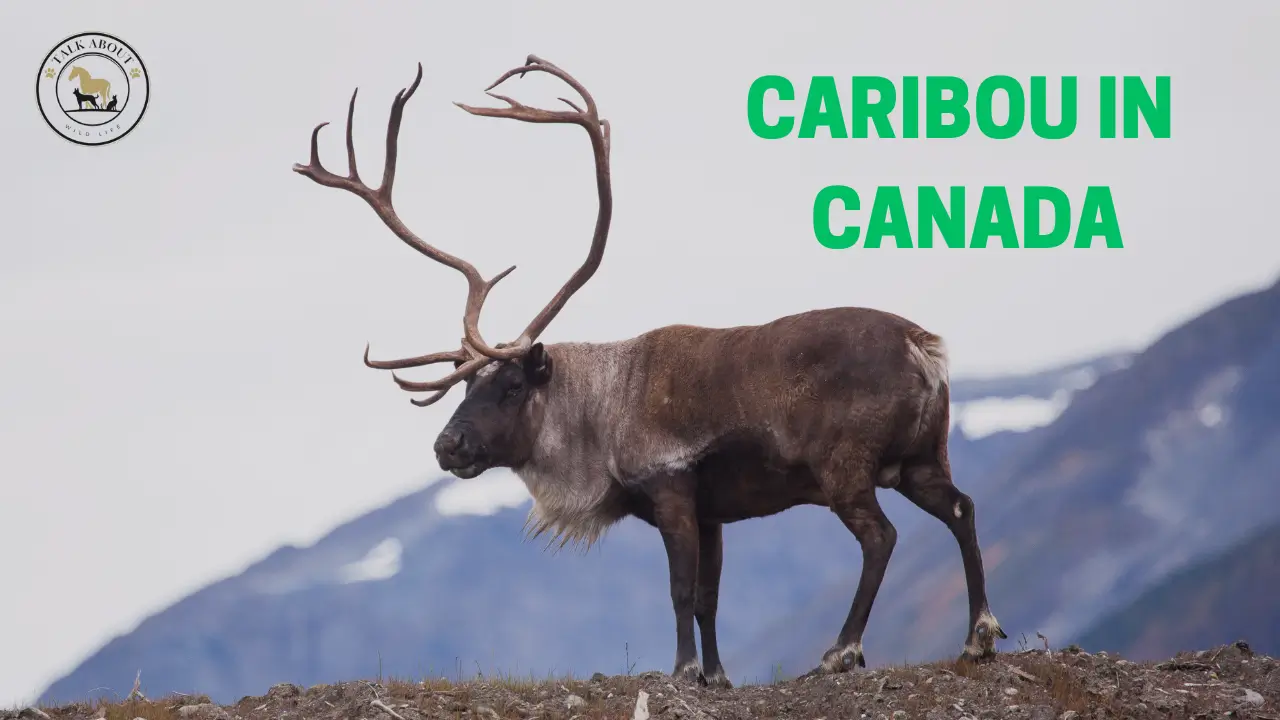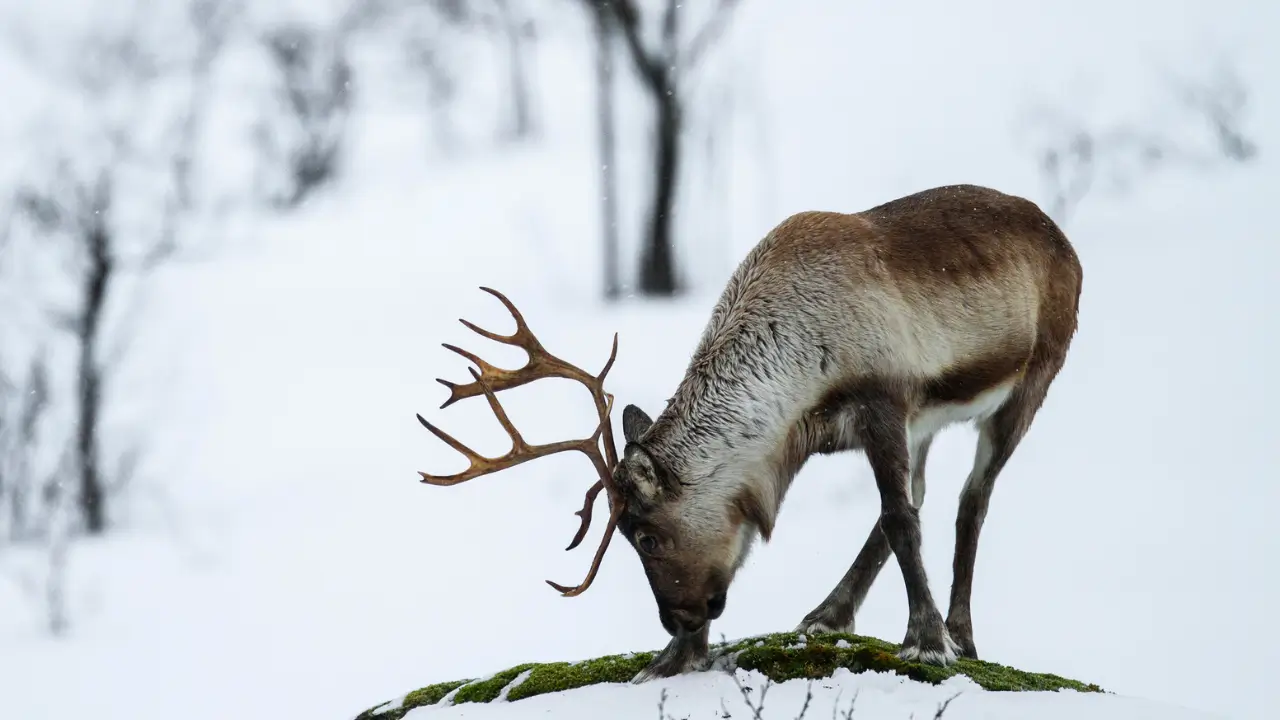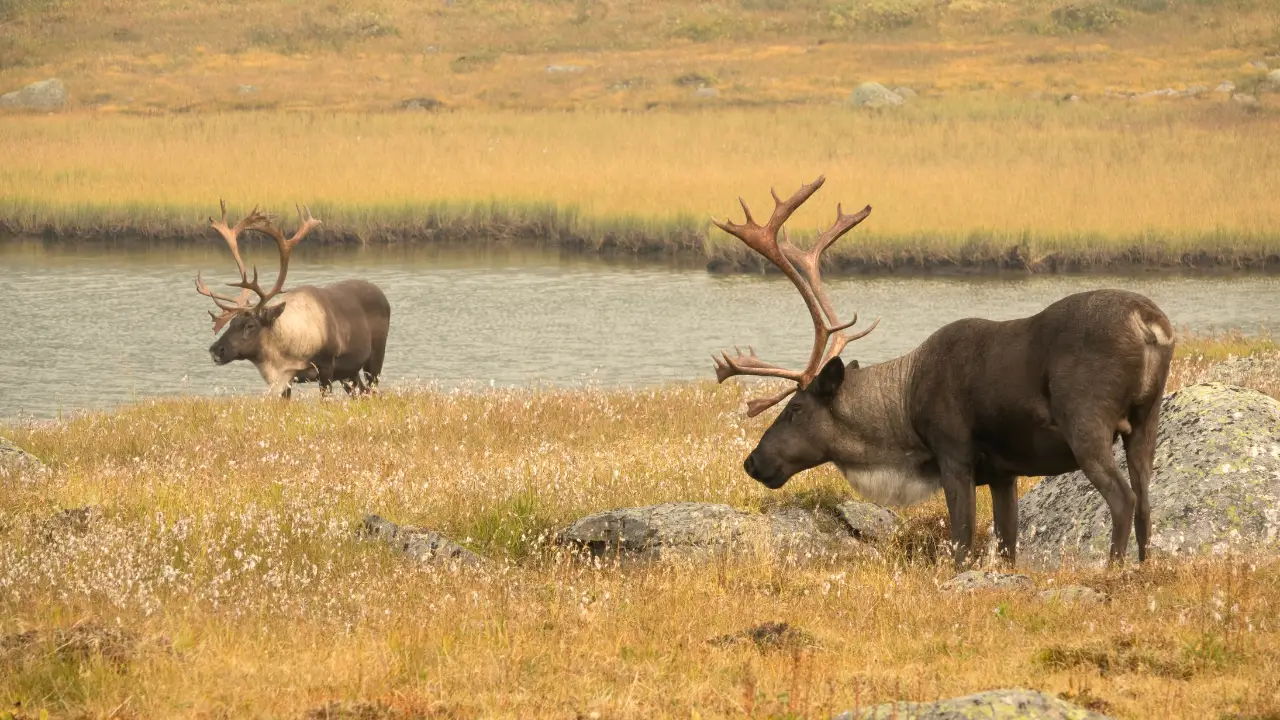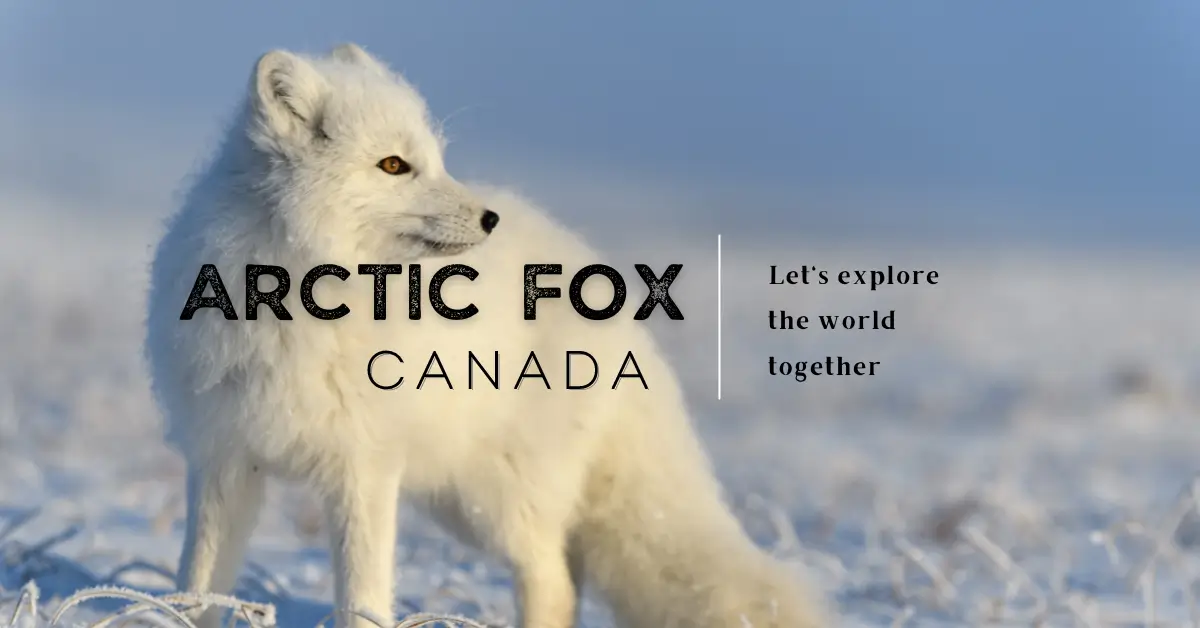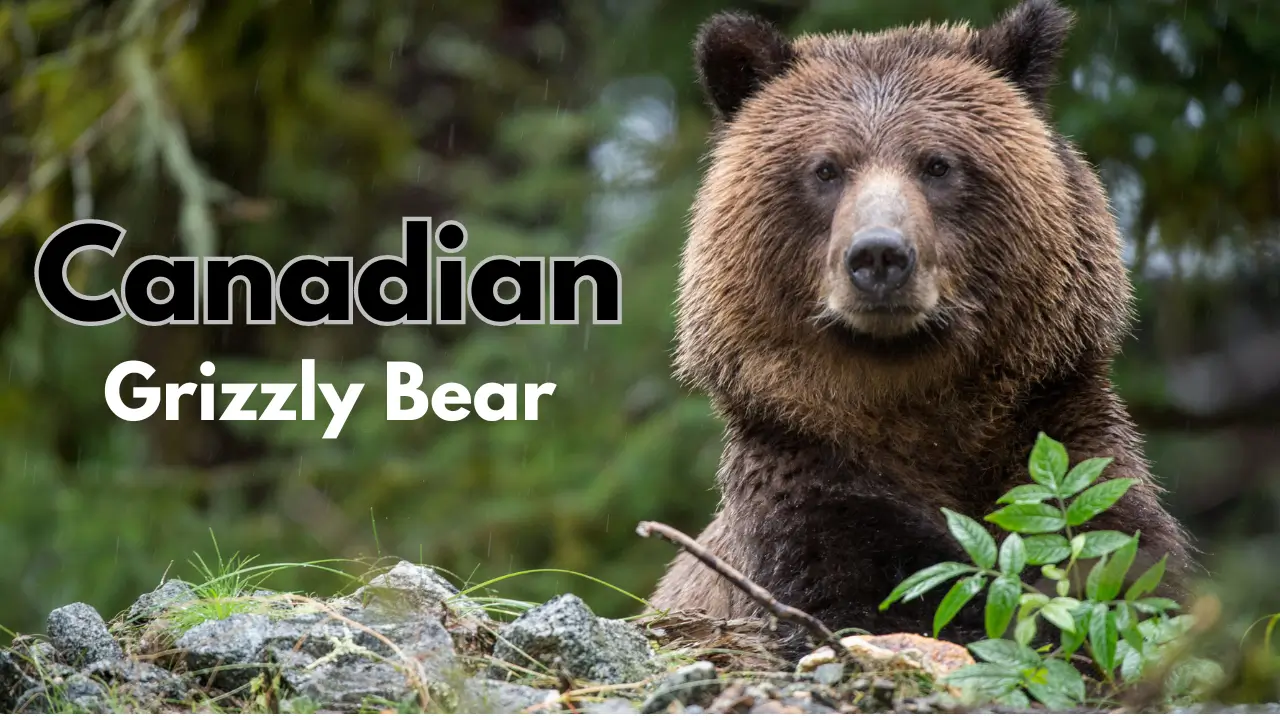Caribou are large animals that look like deer and inhabit icy areas. Their fur is thick to keep them warm in the freezing weather. Their feet are big and flat, which helps them walk on top of deep snow without falling through. Other animals like wolves and bears catch and eat caribou.
Caribou are an iconic species found across Canada’s northern regions. These impressive reindeer relatives walk across the vast tundra and boreal forests, making annual migrations of hundreds of miles. Their large antlers and warm coats are well-adapted to survive harsh Canadian winters.
Physical Characteristics of Caribou
Below are some physical characteristics of these species wandering in different Canadian states;
| Features | Relevant Information |
| Scientific Name | Rangifer tarandus |
| Life Span | Average is 8 – 10 years and can go up to 15 years. |
| Diet | Willow, Sedges, Plants, Mushrooms, and Blooming Taundra In winter, they eat lichens, dried sedges, and shrubs. |
| Height | About 1- 1.2 meters |
| Average Weight | For males, it is 180kg. for females, it is 135 kg. |
| Habitat | High arctic areas, Old and mature forests |
| Role in Ecosystem | Vegetation management, Nutrient recycling, Habitat creation and Ecosystem engineering |
| Status of specie | Not Endangered |
Here is a list of some fascinating facts about this unique animal inhabiting the Canadian land that will increase your curiosity to see these wild animals:
-
Caribou and Reindeer
Caribou are the same species as reindeer, but they are called caribou in North America.
-
Insulating Fur
Caribou are well-adapted to cold climates with their hollow fur, which traps air and insulates their bodies from the cold.
-
Excellent Swimmers
They are excellent swimmers and can cross rivers, lakes, and even the ocean during their migrations.
-
Snowshoe Hooves
Caribou have large, flat hooves that act like snowshoes, making it easier for them to travel across snow and ice.
-
Herd Structure
Females live in herds, but males typically travel alone or in small groups.
-
Antler Growth
The male and female caribou grow giant antlers made of bone on their heads. The antlers fall off, but new ones grow back each year.
-
Canadian Symbolism
The Caribou is featured on the Canadian 25-cent coin, which is known as the “Caribou Quarter.”
-
Native Resource
Caribou has been an essential source of food, clothing, and tools for many native communities in Canada for thousands of years.
-
Migration to Isolated Places
Caribou walk for miles and miles to find things to eat and safe places to have baby caribou.
Sub-Species of Caribou in Canada
3 subspecies of caribou are commonly found in Canadian territory;
-
Woodland Caribou
This species is also named “Boreal Forest Dwelling Caribou”. They are found in boreal forests living in small groups.
-
Barren-ground Caribou
These caribous arrive after migration to Canada from other areas and inhabit Canadian lands. The major type is the Porcupine Caribou.
-
Peary Caribou
They are commonly populated in the northern and high arctic areas of Canada. They are classified as the smallest caribous in Canada.
Sightseeing of Caribou in Canada
These mammals can be seen throughout Canada from the western, southern, eastern, and northern territories.
| Direction of the Country | Places Where Caribou Can be Seen |
| Western Side | British Columbia, Alberta |
| Eastern Side | Newfoundland, Labrador, Quebec |
| Northern Side | Mackenzie Mountains, Taiga Shield region, Baffin Island, Ogilvie Mountains |
| Central Region | Manitoba, Saskatchewan, Ontario |
Some national parks have abundant populations of these species and individuals interested in capturing them in cameras.
- Mealy Mountains National Park Reserve
- Torngat Mountains National Park
- Northern Rockies region
- Spatsizi Plateau Wilderness Provincial Park
- Caribou River Provincial Park
- Atikaki Provincial Park
- Wabakimi Provincial Park
- Polar Bear Provincial Park
Worthy Time for Viewing Caribou in Canada
The best time to see caribou lasts the whole year but varies from one place to another. Different places can have different times for seeing caribou and some of them are listed;
| Season | Months for Sightseeing |
| Summer and Late Summer (In arctic areas) | June to August |
| Fall | September to November |
The caribou migrations can vary from year to year, and their movements are influenced by factors such as weather conditions, predator presence, and food availability.

